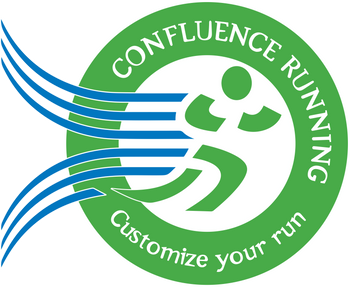From 2 Miles to Marathon: Fartlek Hill Work for Every Runner

Fartlek & Hills: The Perfect Marriage of Speed and Strength
Fartlek training has long been celebrated among runners and coaches for its versatility and effectiveness. The Swedish term “fartlek” literally translates to “speed play,” underscoring the workout’s emphasis on spontaneity and fun. While many runners are familiar with rigid interval workouts—where you measure exact distances or times for each repetition—fartlek runs stand out because they encourage runners to fluctuate speed based on feel, landmarks, or randomized intervals.
In this post, we’re taking the concept of fartlek one step further by introducing a hill workout with telephone poles as “randomizers.” This approach isn’t simply about adding variety; it’s an intentional way to challenge your body and mind to adapt quickly to shifting intensities and paces. Whether you’re training for a short 2-mile race, ramping up for a marathon, or prepping for a triathlon, the unpredictability of a fartlek hill workout is a game-changer for building speed, endurance, and mental tenacity.
Why Fartlek?
1. Encourages Speed Adaptability
One major advantage of fartlek is its unstructured format. Instead of sticking to a specific pace or distance, you alternate between faster and slower running based on external cues (like telephone poles, trees, or time) or internal cues (like perceived exertion). This randomized approach mimics real race dynamics, where pacing ebbs and flows in response to hills, wind, and competition.
2. Builds Aerobic and Anaerobic Capacity
By interspersing short, intense bursts within a longer continuous run, you develop both aerobic endurance and anaerobic power. The heart and lungs work harder during fast surges, while the body’s ability to clear lactate improves during the active recovery jogs that follow each surge.
3. Adds Psychological Variety
Fartlek’s “playful” nature breaks the monotony of a rigid training program. You won’t be obsessively checking your watch or measuring exact distances. Instead, your mind remains engaged, responding to every new pole, turn, or tree as an opportunity to surge or slow down.
The Power of Hills
1. Strength and Endurance Rolled into One
Running on a flat surface is beneficial for speed, but hills offer a natural form of resistance training. Moving uphill intensifies the workload on your glutes, calves, and hamstrings. Over time, this extra strain translates into stronger muscles and a more efficient stride, which will serve you well in races of any distance.
2. Heart-Rate Boost
Inclines elevate your heart rate faster than running on level ground. As a result, even shorter hill runs can produce the aerobic benefits of a longer flat run. The increased cardiovascular demand helps improve VO₂ max (the maximum rate of oxygen consumption)—a key metric for endurance athletes.
3. Mental Toughness
If you’ve ever tackled a steep hill near the midpoint or end of a race, you know how crucial mental fortitude becomes. Hill workouts teach you to maintain effort under fatigue, forging a stronger mindset that will help you push through challenging moments in training or competition.
4. Real-World Race Preparation
Many races—from 5Ks to full marathons—feature rolling hills or sudden inclines. Training on Murray Hill (700 feet of elevation over 2.5 miles) simulates the unpredictability you might encounter on race day. When you’re used to surging on a steep gradient, a smaller hill on a race course feels far more manageable.
Randomized Speed Play: Why It Matters
1. Simulating Unpredictable Race Dynamics
In a real race, you don’t control the course or other competitors’ pacing. Sometimes you’ll face unexpected surges from opponents, abrupt changes in terrain, or windy stretches that force you to adjust your speed on the fly. Fartlek training with random markers like telephone poles prepares you for these varying conditions.
2. Avoiding Plateau
Structured speedwork (such as interval training) is highly effective but can sometimes lead to plateau if your body adapts too specifically. By alternating distances and intensities in a more random pattern, you keep your muscles guessing, which often yields fresh gains in speed and stamina.
3. Enhanced Focus
Engaging in random speed play demands you stay present in the moment. Instead of zoning out or relying on a watch to beep every few minutes, you’re constantly scanning the environment. “Am I near a telephone pole?” “Should I sprint to that fire hydrant?” This mental engagement keeps your brain active, which can translate to better focus in races or other areas of training.
Telephone Poles: The Perfect Randomizer
1. Irregular Spacing
Unlike a track with standardized 400-meter loops or a measured interval route, telephone poles come in all shapes and spacing distances. Sometimes a pole might be 50 yards away, other times 100. This variety ensures that each surge is uniquely challenging. You might sprint for just 20 seconds one time and then 40 seconds the next.
2. Directional Variation
Telephone poles often appear in different spots—some might be on the left side of the road, others on the right. You may have to weave across the road or adjust your path slightly. These micro-adjustments hone footwork and proprioception (your body’s awareness in space).
3. Environmental Factors
Maybe a telephone pole is right in front of a driveway or near a hill crest. This randomness forces you to adapt your pace. If there’s a quick downhill before the next pole, you might extend your surge; if it’s uphill, you’ll have to work harder for the same time or distance.
4. Breaking Monotony
Because there’s no uniformity, you stay mentally engaged and motivated. You never really know how far the next “challenge” will be, which keeps the workout exciting and fresh.
The Workout: Step by Step
-
Warm-Up (10 minutes)
- Jog lightly or do a brisk walk, gradually increasing heart rate.
- Incorporate dynamic stretches (leg swings, high knees) to loosen up the hips and calves.
-
Fartlek on Murray Hill (20–40 minutes)
- Terrain: Murray Hill is about 2.5 miles long with a 700 ft elevation gain.
- Markers: Use telephone poles as signals for sprint and recovery segments.
-
Pyramid Pattern:
- 1 telephone pole fast, then 1 telephone pole slow.
- 2 telephone poles fast, then 2 telephone poles slow.
- Continue up to 5 telephone poles fast, then 5 telephone poles slow.
- Descend back to 1–1.
- Repeat this cycle within your 20–40 minute window.
-
Cooldown (10 minutes)
- Return to a gentle jog or walk.
- Follow with light static stretches to aid recovery (calf, quadriceps, hamstrings, hip flexors).
Adapting Fartlek for Different Training Goals
1. 2-Mile Training (SEO Focus: “2 mile training”)
- Keep the total fartlek duration around 20 minutes.
- Use a more moderate pyramid (e.g., up to 3–3) if you’re a beginner.
- Prioritize shorter, sharper surges to build speed without overtaxing your body.
2. Marathon Training (SEO Focus: “marathon preparation”)
- Extend the workout to 30–40 minutes, or incorporate a longer warm-up before hitting the hill.
- Aim for consistent efforts rather than all-out sprints—this teaches you to manage pace over long distances.
- Gradually increase the intensity and duration of surges each week, keeping your base mileage in mind.
3. Triathlon Training (SEO Focus: “triathlon training”)
- Since triathlons demand efficiency across swim, bike, and run, use the hill fartlek after a bike session or a swim to simulate race-day fatigue.
- Focus on smooth transitions between fast and slow running to mimic the changing intensities you’ll experience in triathlon events.
- Pay special attention to form; running uphill with tired legs is challenging, but it helps prepare you for the run portion after a hard cycling leg.
Hill-Specific Benefits
- Leg Strength and Power: Uphill sprints work the glutes and hamstrings in ways flat sprinting doesn’t.
- Higher Caloric Burn: Hill running burns more calories, aiding weight management or body composition goals.
- Better Stride Mechanics: The incline encourages a forward lean and mid-to-forefoot strike, typically considered more efficient for running.
For more detailed insights, check out Triathlon Training 101: The Importance of Hills & Proper Cold Weather Gear, which highlights the role of hills in building resilience and proper form.
SEO Tips for Your Running Blog or Personal Notes
- Use keywords like “fartlek training,” “hill workout,” “telephone pole workout,” and “endurance building” in your headings and image alt tags.
- Incorporate location-specific terms (e.g., “Murray Hill”) if you want local runners to find your post.
- Create internal links to other posts about running form, gear reviews, or nutrition tips.
- Keep your meta descriptions concise yet enticing (around 160 characters).
Q&A Section About the Workout and Whys
Q1. What is a Fartlek Run, and How Does It Help Me Get Faster?
A fartlek run blends continuous running with bursts of higher intensity. By changing speeds randomly, you train both aerobic and anaerobic systems, boosting your overall pace and stamina. Over time, these variable efforts elevate your lactate threshold and speed endurance.
Q2. Why Combine Fartlek with Hill Running?
Hills act like a natural weight-training session for your legs. When you add fartlek surges on an incline, you amplify both muscular and cardiovascular benefits. This combo builds leg power, improves heart-lung function, and develops resilience—all crucial elements for succeeding in hilly races or tackling the final miles of any endurance event.
Q3. How Do Telephone Poles Add Randomness to the Workout?
Telephone poles vary in distance and location. Some might be 20 seconds apart at a sprinting pace; others might be 45 seconds away. This irregularity keeps your body guessing and replicates real-world scenarios where you don’t always know when you’ll need to surge.
Q4. Can I Adjust This Workout for My Fitness Level?
Absolutely. Beginners might do shorter fartlek segments or limit the peak to 3 or 4 telephone poles before descending the pyramid. Advanced runners can aim for the full 5–5 pyramid or increase total workout time to 40 minutes.
Q5. Why Are Warm-Up and Cooldown So Important?
A structured warm-up raises your core temperature, increases blood flow to working muscles, and reduces injury risk. A proper cooldown allows your heart rate to gradually return to resting levels and helps flush out lactic acid, mitigating next-day soreness.
Q6. How Often Should I Do This Workout?
For most runners, once a week or once every two weeks is sufficient. Be sure to incorporate easy runs or rest days between challenging hill fartlek sessions. Adequate recovery ensures you reap the full benefits of the workout without risking injury or burnout.
Final Thoughts
A fartlek hill workout using telephone poles as markers offers an exciting, challenging, and highly effective way to build both physical and mental stamina. By blending the unstructured speed bursts of fartlek with the natural resistance of a steep incline, you equip yourself to handle the unpredictable nature of real races—whether that’s a 2-mile dash, a 26.2-mile marathon, or a rigorous triathlon run leg. If you’re looking to bring more fun and variety into your running regimen, this hill-based “speed play” is exactly the workout you need.
Good luck—and remember to have fun playing with your speed on those hills!
Tags for Fartlek Run and Speed Play
running workout, fartlek training, speed play, hill workout, triathlon training, marathon preparation, 2 mile training, endurance building, hill intervals, telephone pole workout, workout motivation, speed endurance, uphill running, fitness class routine, running tips, stamina boost, strength training, running technique, heart health, running program


